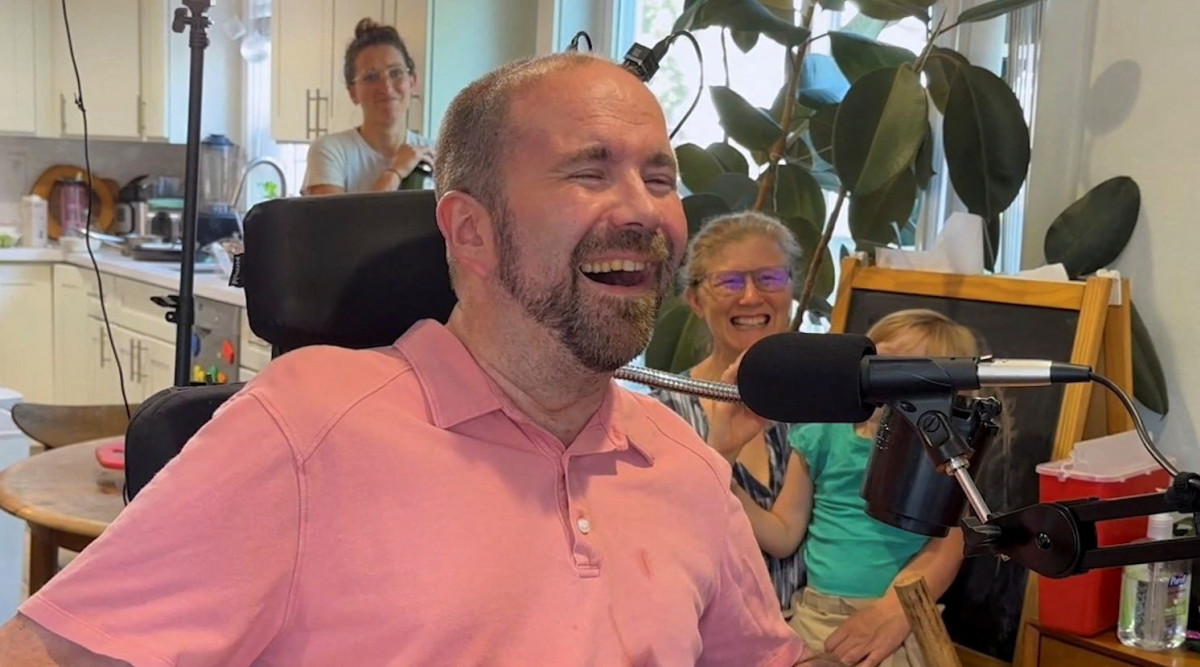Another breakthrough in the field of brain chips: a man who suffered from ALS, an incurable disease that leads to complete paralysis, and who lost the ability to speak, was able to communicate using a brain chip implanted in his head. With the power of thought, he was able to activate an application that produced a voice similar to his voice before the disease, at a rate of dozens of words per minute. The development was presented in the new issue of the prestigious medical journal New England Journal.
This is a 45-year-old American man who suffered from amyotrophic lateral sclerosis – ALS, also known as “Lou Gehrig’s disease”. In these patients there is progressive degeneration of nerve cells in the spinal cord and brain. These cells are responsible, among other things, for voluntary muscle control, and when they are damaged, the muscles gradually weaken until complete paralysis, and eventually death.
A new study reveals: at what age does aging begin? | Dr. Itai Gal
Nutritional danger: feeding infants and premature babies formulas with milk can cause allergies
The only person who was able to communicate with the patient was his therapist: the patient was able to speak indistinctly at an average rate of about seven words per minute, while a normal speaking rate is about 160 words per minute. The researchers implanted in his brain micro electrodes manufactured by the Balckrock Neurotech company and which recorded the neural activity in brain areas related to language and speech.
Signals from his mind were transferred to a computer program and with the power of thought he was able to dictate text to the computerized application. After intensive training, the patient was able to produce within 16 hours a speaking rate of 32 words per minute, and only 2.5% of them were incorrect. In comparison, the smartphone dictation app has an error rate of approximately 5%. On the second day of use, the patient was able to communicate using a vocabulary of 125 thousand syllable combinations. Decoded words were displayed on a screen and then played using text-to-speech software that was programmed to sound as close as possible to the original voice before becoming ill.
In the meantime, positive reports continue from the experiments with Elon Musk’s brain chip implantation: about a week ago, Musk reported that a second brain chip was implanted designed to give paralyzed patients the ability to use digital devices with the power of thought alone. Musk said that the second patient suffers from a spinal cord injury similar to the first patient, and that 400 of the 1024 electrodes in the brain chip are working.
“I don’t want to spoil it but it seems to have gone very well with the second implant,” said Musk, “there’s a lot of signal, a lot of electrodes, it’s working very well.” Musk said that during the year the chip will be implanted in eight more patients as part of the clinical trials of his company Neuralink.
The first transplanted person was born Arbo, injured years ago in a diving accident and became paralyzed throughout his body. Last January, he underwent the first transplant, and has since been able to operate a mouse, and also tweet on the X network. As you may remember last year, the US Food and Drug Administration gave Neuralink company approval for the first trial to test the implant on humans. The company stated that they intend to eventually allow the paralyzed to use a computer or cell phone using only the power of thought.
Neuralink was kind enough to open their doors for me to tour their headquarters a few weeks back. It was an amazing experience and a day I’ll never forget. This was at a company wide meeting at the end of the day. Thank you to everyone who made this possible. Hope y’all enjoy!… pic.twitter.com/YNa2Jtjhnk
— Noland Arbaugh (@ModdedQuad) March 22, 2024
The company’s chip includes electronic components hermetically sealed inside a device the size of a large coin. From this chip implanted inside the brain, several dozens of extremely thin wires protrude directly into the brain tissue. Signals from the chip are sent via Bluetooth to a brain-computer interface that will allow a person, for example, to control a cursor on the screen or even move a robotic limb implanted in his body.
The Neuralink chip is inserted into the body using a surgical robot specially designed to implant the implant and the 64 flexible and thinnest connected wires on which 1,024 electrodes record neural activity. The robot has five built-in camera systems and uses optical technology for non-invasive imaging of brain tissue. The robot uses a thin needle as a human hair that inserts the wires into place in the brain.
In the past, Musk explained that in his vision a paralyzed person could become almost independent when he controls his environment, communicates and even activates means, can move and even move paralyzed limbs – all this with the power of thought alone. The chip, Musk hoped, could even help restore sight to the blind. Similarly, translating neural signals into external movement should help patients with severe neurodegenerative diseases like ALS communicate with the environment by moving a cursor and typing with their brains.
